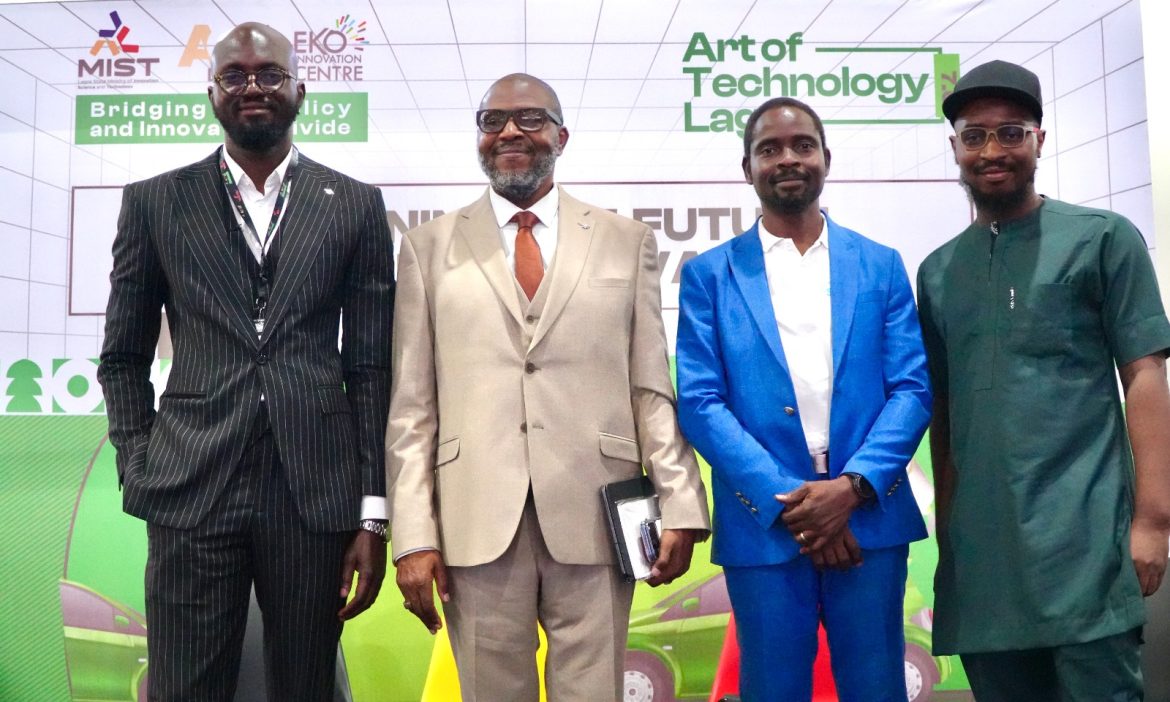In spring 2019, Saks Fifth Avenue unveiled a lavish, much-publicized $250 million renovation of its iconic Manhattan store. Meanwhile, Seattle-based luxury retailer
 Nordstrom — which had already staked a claim in New York City with its Nordstrom Rack and Nordstrom Local stores — just threw down the gauntlet with its first-ever New York flagship. The new store occupies a full seven floors of the tallest residential building in the western hemisphere, according to CNBC.com, at the posh address of 57th and Broadway.
Nordstrom — which had already staked a claim in New York City with its Nordstrom Rack and Nordstrom Local stores — just threw down the gauntlet with its first-ever New York flagship. The new store occupies a full seven floors of the tallest residential building in the western hemisphere, according to CNBC.com, at the posh address of 57th and Broadway.
And last March on Manhattan’s West Side, the long-anticipated Hudson Yards complex opened its doors, featuring a veritable parade of designer brand stores such as Chanel, Coach, Dior, Fendi, Louis Vuitton and Tiffany, not to mention Dallas-based luxury retailer Neiman Marcus.
If in-store retail is dying, as some have predicted, these businesses didn’t get the memo. Many traditional luxury retailers are still betting on the power of brick-and-mortar locations, even in an age when many people think of shopping as something you do on your phone, and costly designer jewelry, watches, handbags and clothes can be purchased with a few clicks. Moreover, these physical stores have been throwing in additional onsite services to lure customers, from personal stylist appointments, clothing alterations and shoe repair to trendy restaurant choices and online order pickup.
At the Baker Retailing Center CEO Summit in New York, industry players — among them top executives from Saks, Nordstrom and Kering, a major European designer brand group — talked about the state of luxury retail. How important are physical stores in today’s retail experience? How much of the luxury business is moving online, and how can legacy retailers flourish despite competition from so-called pure plays, the e-commerce companies? What strategies are companies deploying to entice new generations of consumers?
Saks Fifth Avenue president Marc Metrick was interviewed by Steve Sadove, the retailer’s former chairman and CEO. Sadove called the Manhattan store renovation “masterful and just an amazing remake of what was truly a heritage site.” Metrick commented that the renovation was critical in repositioning Saks and entering into what he called “the new luxury.”
Sadove also stated that despite the luxury category being relatively flat, Saks Fifth Avenue has been showing growth. How is it managing to win in this environment? Metrick, who took the helm in 2015, said he had worked to transform Saks into a fashion authority, delivering exceptional service by creating a very deep connection with its customers. He believes this has paid off for the store.
Of course, Saks has a website as well. In fact, its e-commerce has grown to constitute a significant part of its business, according to Sadove. While Metrick acknowledged the importance for brands of having an online presence, he emphasized the power of brick-and-mortar stores, especially when it comes to luxury items. He compared the luxury shopping experience to watching a top Broadway show like Hamilton — people want to be in the theater seeing it live rather than sitting home watching TV.
In a separate talk, Shea Jensen, a senior VP of customer experience at Nordstrom, also emphasized the value of the physical store. She said of Nordstrom’s new Manhattan flagship tower, “We believe customers will be inspired, will have moments of discovery and will learn about our brand in a really fantastic environment.”
The new store will offer entertaining experiences, she said, such as personalization: Customers can choose items such as backpacks, phone cases and Converse sneakers and have them personalized on the spot. She also highlighted the role of Nordstrom’s sales associates, asserting that shoppers welcome the help of trusted experts. Metrick, too, commented on the value of his stores’ stylists and in-house associates. He named them as a key differentiator for the brand against the pure plays.
At the same time that new luxury consumers want an exciting, entertaining shopping experience, they also want to feel comfortable and “at home,” Metrick said. He noted that Saks tries to create this warm environment not just in the Manhattan flagship but in all of its stores. “A lot of what we’ve done is all about becoming less transactional, becoming a much more emotionally connected retailer for our customer.”
Sadove asked Metrick if he was concerned about competition in New York from Nordstrom and the Hudson Yards retailers. He answered, “We’ve been here for 94 years and we could have rested on our laurels…. Or we could have stuck our flag in the ground and said, ‘This is our city.’ That was why Saks undertook the renovation, he said, and he “feels very good” about how the store is positioned.
Serving Retail Customers on Their Terms
Ultimately, when it comes to the question of in-store versus online selling, Metrick said he’s pursued not a channel strategy but a consumer strategy. That approach, he said, is focused on creating an ecosystem, a connected strategy, for each individual customer to shop with Saks when, and how, they want to. Facilitating this means applying tools like data analytics to understand customers better, he said. The aim is that when a customer is shopping on Saks.com, the sales associate that the customer works with in the store would know “how I’m shopping, what I’m experiencing, what I’m looking for.”
Elaborating on the subject of data analytics, Metrick said that while there may be tough trade-offs to make in terms of investments, the decision is similar to the one that confronted retailers 15 or 20 years ago about creating an internet presence. Those who decided to invest back then are in a much different place as stores, he said, and he believes retailers are now facing the same tipping point.
He reminded the audience that department stores today are not just competing against each other but with many other businesses, including Netflix and Starbucks, for example, and the influence their apps and recommendations have with consumers. So, retailers need to pay attention to data analytics, he said. “While it might not pay off today, 10 years from now it’ll be impossible to catch up if you don’t do it right.”
Like Metrick, Jensen said that her goal was to serve customers where, when and how they want to shop, “across multiple touch points and through multiple channels.” “We’re very aware that all of us are living in an increasingly digital world,” she said.
She gave some scenarios of the omnichannel experience. A consumer might view social media like Instagram and consider buying an item they see there. They could order it online and pick it up at a local Nordstrom store instead of shipping it to their home. Or they could go to a physical store before ordering it, to “see, touch, feel and try it on,” and explore additional items and brands while there. Perhaps they bought a pair of pants online but need a hem; they could bring the item to a Nordstrom for that service.
Jensen said Nordstrom is looking for new ways to make its inventory accessible and available to customers whether they’re shopping in-store or sitting at home and wanting an item as fast as the next day or even the same day.
For Millennials, What Is Luxury?
Providing a brand perspective on luxury retail was Laurent Claquin, president of Kering Americas, the second-largest luxury group in the world. Its brands include such storied names as Gucci, Yves Saint Laurent, Balenciaga, Alexander McQueen and Bottega Veneta.
Claquin discussed how he defined a luxury item. One key factor is a combination of craftsmanship, design and quality of the material, which he called the minimum requirement. He gave the example of a Balenciaga sneaker: It may be “just” a sneaker, usually thought of as a casual-wear item, but it is actually 90 different pieces of leather assembled by hand in Italy. Another major factor is the emotion surrounding the item, he said, referencing the comment Saks’ Metrick had made about forging an emotional connection with customers. “A very strong brand that has a point of view and a statement is so important, because that [stimulates] the emotion,” he said. Claquin was asked about the luxury business as it relates to millennial customers. He responded, “I think the strategy for millennials is actually not to have any strategy for millennials, because they can smell it.” Authenticity is key with this demographic, especially since we live in a world of transparency and sharing, he noted.
He cited Gucci, a Kering brand, as achieving success with millennials and Gen Z by allowing consumers and new design trends to influence the brand: “opening the door of the retail stores, literally and also digitally.” He noted that Gucci has worked with a variety of artists on Instagram, for example. The brand also invited a graffiti artist to collaborate on one of its fall collections and partnered with a renowned Harlem tailor to transform Gucci for the hip-hop market, according to reports in Forbes and Fast Company.
Nordstrom’s Jensen also spoke about including the consumer in decision-making. She described bringing groups of customers “behind the curtain.” For instance, in Los Angeles in 2018, Nordstrom invited about 200 customers to help decide what services they wanted in their area’s Nordstrom stores. “It gave us a greater deal of confidence that we were going to be delivering something Los Angeles customers wanted,” she said.
Continuing on the theme of millennial luxury consumers, Claquin named sustainability as an important principle. He said that companies needed not just to issue statements about helping the environment but also actually practice it. Reducing fashion industry-related pollution has long been embedded into Kering’s business model, he said: In fact, since 2008, part of the compensation of the CEO has been linked to achieving precise, measurable sustainability objectives. Moreover, Kering CEO Francois Pinault was asked by French president Macron to establish objectives for a waste-reducing Fashion Pact, which Macron debuted at the 2019 G7.
So luxury — including in-person luxury retail — continues into the next decade, even as it’s being transformed by digital, social media, data analytics and a new generation of consumers. The emotional satisfaction of buying expensive things — things we don’t necessarily really need — continues to be a potent force, according to some of the conference speakers. Wharton marketing professor Cait Lamberton commented, “When people have experiences in a disruptive world and they are concerned, they may turn to some kind of shopping experience as a way of creating a psychological equilibrium.”








